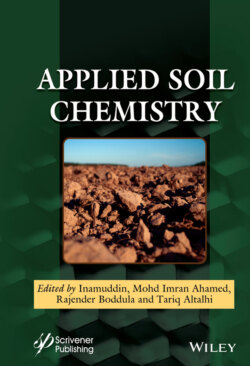Читать книгу Applied Soil Chemistry - Группа авторов - Страница 41
2.1.1 Weathering Similar to Hydrothermal and Diuretic Alteration of Minerals
ОглавлениеSome minerals and layer silicates also form part of weathering research which are obtained from hydrothermal and deuteric changes. Layer silicates, consequently, appear at more depth of geologic column in comparison to the weathering depths during initiation. Even though silicates find its way to soil during the exposure of formation of rock due to erosion at the surface, they does not represent example of c weathering process chemically. According to Bowen et al., in the year 1922 [19–21], occurrence of deuteric changes was observed later during rock crystallization. According to Harker et al., in the year 1932 [22–24], during the rock metamorphosis, from feldspar, sericite was formed and chlorite might formed from garnet-biotite schist. Shand et al., in the year 1944 [25–27], reported that hydrothermal alteration is modifications in rock occurring due to the hot solution movement through specified routes into the earth. Some examples of this type of weathering were reported by Meyer and Sales et al., in the year 1950 [1], sericite formation from hydrothermal alteration of quartz monazite up to 20 ft from the channel along which hot hydrothermal solution travelled. Kaolinite was formed further up to another 20 ft. Furthermore, hydrothermal alteration up to 60 ft formed montomorillonite. Variations in the rate of alterations depended on the distance of fracture or channels from the hydrothermal solutions. The examples explained above come in the category of alterations of rock owing to the movement of solutions in the depth of the earth. Moreover, according to Schmitt et al., in the year 1950 [1], there are cases of same kind of alterations arising due to movement of hydrothermal solutions close to the surface. Water of hot spring at Yellowstone Park altered rocks (volcanic) into calcite and zeolites, orthoclase and quartz, and kaolinite and beidellite containing rocks.
